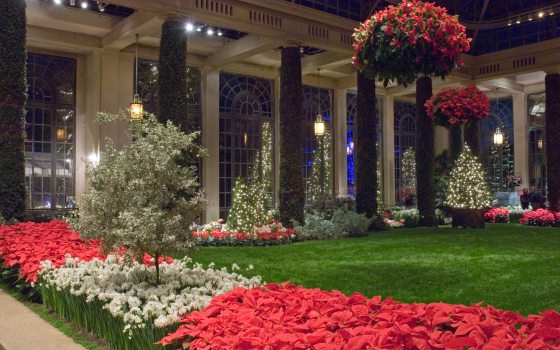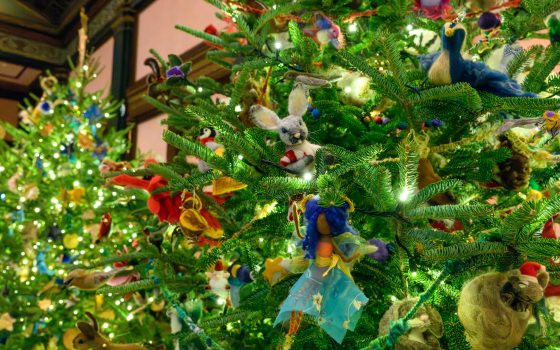Every year, Christmas comes early at Longwood Gardens as we prepare for our largest annual display! Planning begins more than a year in advance, and our gardeners look forward to the hottest days in mid-summer when they can escape to the relative cool of the indoor workshops to prepare different elements for the Christmas season.

Every year, Christmas comes early at Longwood Gardens as we prepare for our largest annual display! Planning begins more than a year in advance, and our gardeners look forward to the hottest days in mid-Summer when they can escape to the relative cool of the indoor workshops to prepare different elements for the Christmas season.
The gigantic poinsettia baskets that grace the Orangery each year never fail to add “The WOW Factor.” Just last week, a team of gardeners gathered to assemble these baskets so that they will be fully grown in time for the kick-off of the holiday season on Thanksgiving Day. This year we are using Euphorbia pulcherrima ‘Nutcracker White’. We started the cuttings on June 1, and by mid- to late-June they rooted and formed a plug, which we planted into 4 inch pots. Then, by mid-July, we were ready to place the four inch potted plants into the baskets.
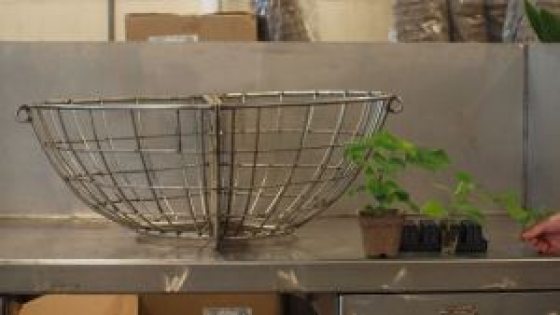
Longwood is fortunate to have very talented metal fabricators on staff who create the special baskets used for our poinsettia display. The baskets are comprised of two halves that are bolted together when completed. After the baskets are planted, they are supported by two brackets that allow them to be grown on a bench in our greenhouse. Through the summer, the plants receive maximum sunlight, and we are able to tilt them forward into an upright position to facilitate watering.

To start the planting process, we line each half basket with sphagnum moss, beginning at the bottom with a 2-3 inch thick band, and work our way up. Watch a little of the behind-the-scenes action as we assemble the baskets in this video clip:
As we work the sphagnum into place we also incorporate the plants. The rooted portion is placed inside the basket and the top part of the plant is carefully pushed through the openings in the basket. Each of the 4 layers is completed, one- at-a-time, and consists of 6-7 plants. We fill behind the sphagnum with a well-drained potting mix to hold the plants in place, and to provide a medium to root into. Our potting mix is custom made at Longwood and contains a product called Root Shield which incorporates Trichoderma, a beneficial fungus that provides disease control.
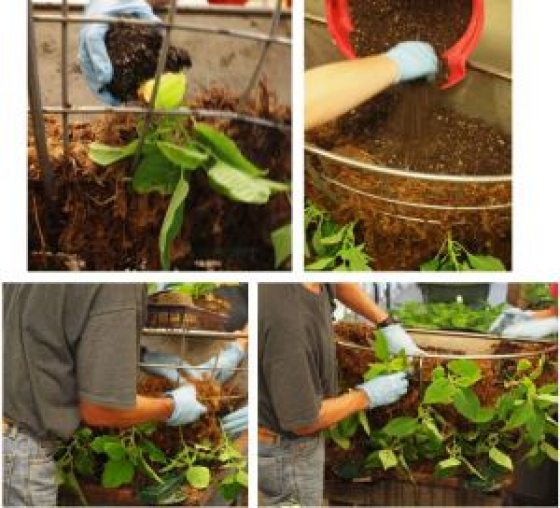
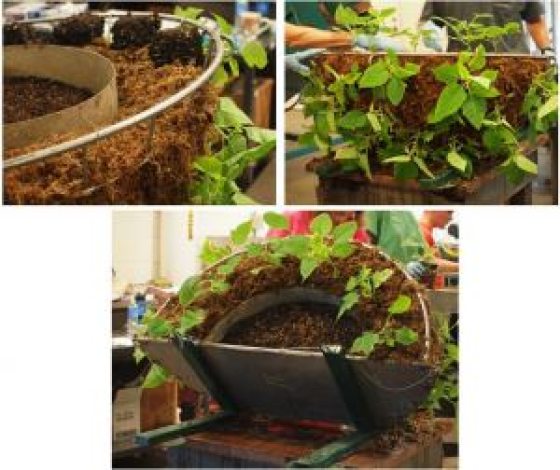
Poinsettias are heavy feeders and require frequent fertilization—constant liquid feed during the week. Poinsettias must be closely monitored for nutrient deficiencies; therefore we frequently take soil and tissue samples that are sent to a lab for analysis. The lab reports allow us to monitor the pH level, soluble salts, and nutrient levels, which should stay within a given range. The baskets are pinched a minimum of two times. "Pinched" means that we remove the top part of the plant to encourage branching and side shoots to form—this ensures a full, bushy basket. The last pinch needs to be made by Labor Day to ensure bract formation and color by Thanksgiving.
In September, we start giving the plants a black-out treatment. The plants need to receive 12 hours of darkness to initiate bract formation. This is achieved by using black-out cloth to prevent any light—such as car headlights or street lights—from entering into the greenhouse at night. A great deal of work is involved in growing poinsettias for the Longwood Christmas display. We hope you enjoy seeing the baskets in the Conservatory this Christmas!
